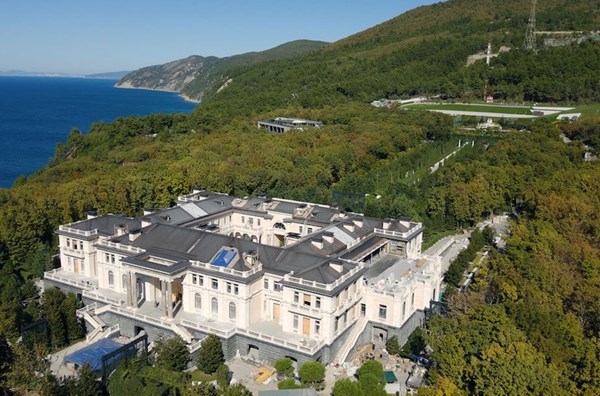Russian Security Service claims no-fly zone over Putin’s Palace was established because of increased NATO activity in the area
The Russian Federal Security Service (FSB) has responded to reports about the no-fly zone over Cape Idokopoz near Gelendzhik, where Putin’s palace is located, saying that a special regime over the area was imposed following the orders of the Russian Ministry of Transport of July 2020 due to "increased intelligence activity of several neighboring states, including NATO members."
At the same time, the Russian Federal Protective Service (FSO), which is responsible for the safety of the Russian leadership, said that there are no protected facilities near the city of Gelendzhik and its surrounding areas.
However, the Federal Protective Service claims have been refuted by the environmentalists who managed to visit the territory of Putin's palace in 2011, when construction was just beginning. They say that even then the object was guarded by the FSO.
In the same year, the airspace over the palace was declared a no-fly zone. A well-known Russian blogger Rustem Adagamov published scans of relevant documents.
"The FSB, of course, is lying, as the no-fly zone URP116 was establilshed on the order of the Russian Transport Ministry No.237 "On the establishment of exclusion zones" on September 6, 2011. Just when the active construction of the palace was launched at the cape," Adagamov said in his Facebook post.
The video investigation of the Anti-Corruption Foundation founded by the Russian opposition leader Alexei Navalny was published on YouTube on January 19. On January 26, it was viewed more than 91.6 million times. In the two-hour video, named “A Palace for Putin: The Story of the Biggest Bribe" Navalny speaks about the palace, which is being built and maintained at the expense of Russian state-owned oil giants Rosneft and Transneft. These companies are headed by Putin's closest friends, Igor Sechin and Nikolai Tokarev.
According to the Anti-Corruption Foundation, the 17,691-square-metre palace is the largest private residence in the country, with an estimated value of 100 billion rubles ($1.33 billion USD). The surrounding area has a hockey field, a church, a greenhouse, a tea house and a tunnel leading to the sea.
The film begins with a call to come to a rally in support of Navalny who was detained a week earlier and arrested for 30 days. On January 23, mass protests were held across Russia, at which 3,770 people were detained, a record number in the country's modern history. The rallies were also held abroad. Leonid Volkov, Navalny’s partner, announced new protests on January 31.
